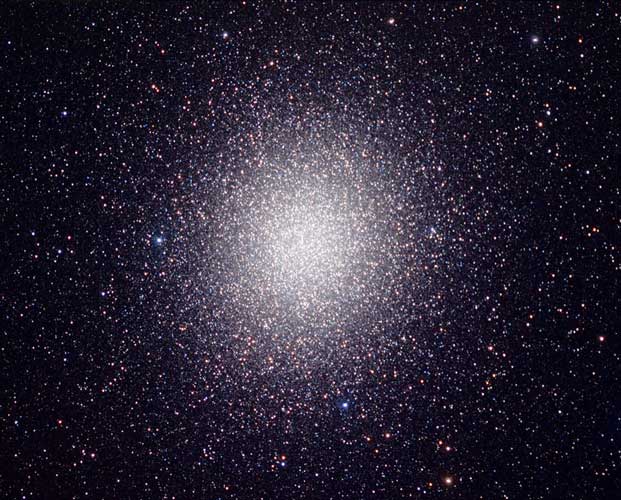Credit & Copyright: Loke Kun Tan
(StarryScapes)
Explanation:
Pictured above is the largest ball of stars in
our Galaxy.
About 10 million stars orbit the center of this
globular cluster - named
Omega Centauri - as this giant
globular cluster orbits our
Galactic center.
Recent
evidence
indicates that Omega Centauri
is by far the most massive of the
about 150 known globular clusters in the Milky Way.
Omega Centauri, cataloged as
NGC 5139, spans about 150 light years across,
lies about 15,000 light years away, and can be seen without visual aide toward the constellation of
Centaurus.
The stars in globular clusters
are generally older, redder and less massive than
our Sun.
Studying globular clusters
tells us not only about the
history of our Galaxy but also limits the
age of the universe.
1999 2000 2001 2002 2003 2004 2005 2006 2007 2008 2009 2010 2011 2012 2013 2014 2015 2016 2017 2018 2019 2020 2021 2022 2023 2024 2025 |
Yanvar' Fevral' Mart Aprel' Mai Iyun' Iyul' Avgust Sentyabr' Oktyabr' Noyabr' Dekabr' |
NASA Web Site Statements, Warnings, and Disclaimers
NASA Official: Jay Norris. Specific rights apply.
A service of: LHEA at NASA / GSFC
& Michigan Tech. U.
|
Publikacii s klyuchevymi slovami:
Omega Centauri - globular cluster - Omega Centavra - Sharovoe skoplenie
Publikacii so slovami: Omega Centauri - globular cluster - Omega Centavra - Sharovoe skoplenie | |
Sm. takzhe:
Vse publikacii na tu zhe temu >> | |
